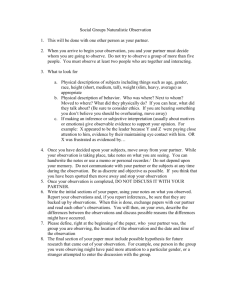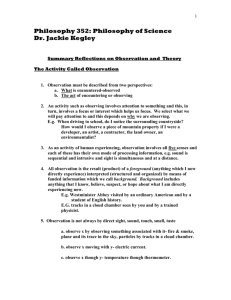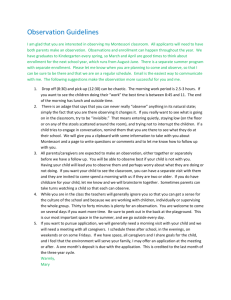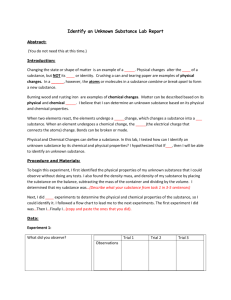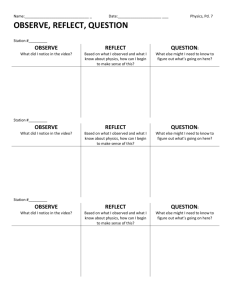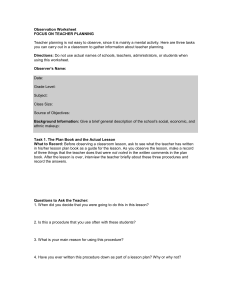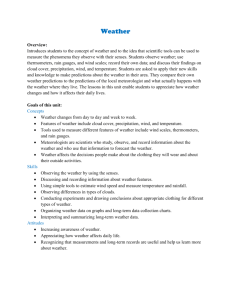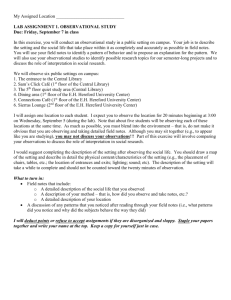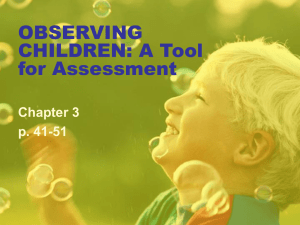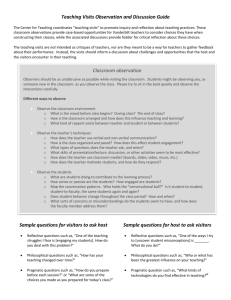Hennick Summary – The Nature of Qualitative
advertisement
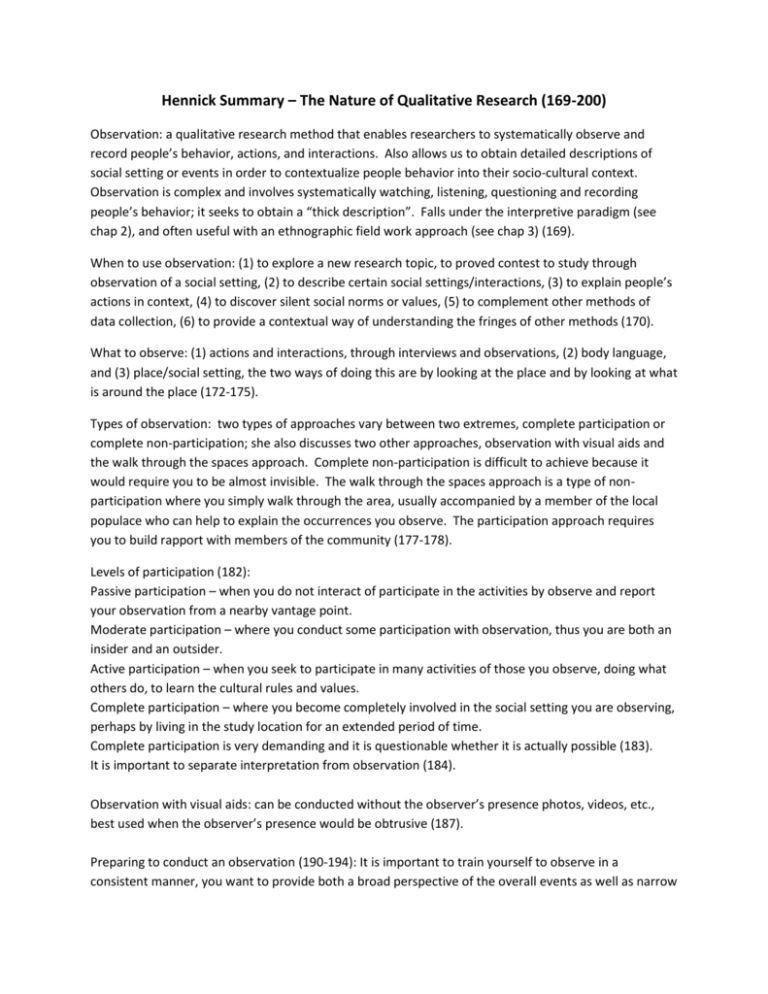
Hennick Summary – The Nature of Qualitative Research (169-200) Observation: a qualitative research method that enables researchers to systematically observe and record people’s behavior, actions, and interactions. Also allows us to obtain detailed descriptions of social setting or events in order to contextualize people behavior into their socio-cultural context. Observation is complex and involves systematically watching, listening, questioning and recording people’s behavior; it seeks to obtain a “thick description”. Falls under the interpretive paradigm (see chap 2), and often useful with an ethnographic field work approach (see chap 3) (169). When to use observation: (1) to explore a new research topic, to proved contest to study through observation of a social setting, (2) to describe certain social settings/interactions, (3) to explain people’s actions in context, (4) to discover silent social norms or values, (5) to complement other methods of data collection, (6) to provide a contextual way of understanding the fringes of other methods (170). What to observe: (1) actions and interactions, through interviews and observations, (2) body language, and (3) place/social setting, the two ways of doing this are by looking at the place and by looking at what is around the place (172-175). Types of observation: two types of approaches vary between two extremes, complete participation or complete non-participation; she also discusses two other approaches, observation with visual aids and the walk through the spaces approach. Complete non-participation is difficult to achieve because it would require you to be almost invisible. The walk through the spaces approach is a type of nonparticipation where you simply walk through the area, usually accompanied by a member of the local populace who can help to explain the occurrences you observe. The participation approach requires you to build rapport with members of the community (177-178). Levels of participation (182): Passive participation – when you do not interact of participate in the activities by observe and report your observation from a nearby vantage point. Moderate participation – where you conduct some participation with observation, thus you are both an insider and an outsider. Active participation – when you seek to participate in many activities of those you observe, doing what others do, to learn the cultural rules and values. Complete participation – where you become completely involved in the social setting you are observing, perhaps by living in the study location for an extended period of time. Complete participation is very demanding and it is questionable whether it is actually possible (183). It is important to separate interpretation from observation (184). Observation with visual aids: can be conducted without the observer’s presence photos, videos, etc., best used when the observer’s presence would be obtrusive (187). Preparing to conduct an observation (190-194): It is important to train yourself to observe in a consistent manner, you want to provide both a broad perspective of the overall events as well as narrow perspectives that focus in on individuals. Other considerations that need to be taken into account when preparing to conduct an observation are: Reflecting on your positionality – consider how this will affect your observations (note: positionality is a made up word the author uses that seems to mean personality/perspective) Deciding what clothes to wear – choose clothes that will help you blend in; you should consult local collaborators Selecting the place to observe – will be guided by the research question or purpose; you will probably want to visit the place before hand and pick the best place to position yourself so that you do not interfere with whatever it is that you are observing. How to gain access to the location – often requires building report with the population. Pre-testing yourself – select a location that is somewhat similar to where you are going to conduct your observation and do a practice observation. This will also help you determine how long you are personally capable of paying attention for. Writing an observation: Field note taking strategies (194-196) – writing continuously; taking short breaks from observation to take notes and then elaborating on them later; becoming familiar with the social setting to find a place where you can observe and take notes; using sketches; labeling notes with date/time/place; using shorthand; including notes on people, activities, and the environment. When taking field notes, seek to avoid intertwining your own personal interpretations with observations. Using a field diary (197) – may include hunches, ideas, feelings, personal opinions, and sometimes feelings of disgust and shock. This is often a useful outlet for you to record your own subjective interpretations of what you are observing, and can be good compliment to field notes. Strengths and weaknesses of the observation method (197): Strengths: provides familiarity with cultural milieu; provides context for behavior; explains behavior; documents unspoken rules; less intrusive than interviews; provides insight into people’s interactions. Weaknesses: time consuming; recording field notes is cumbersome; simultaneous recording and observing is difficult; field notes may be subjective; researchers need to refrain from interpretation; need skilled observers.
